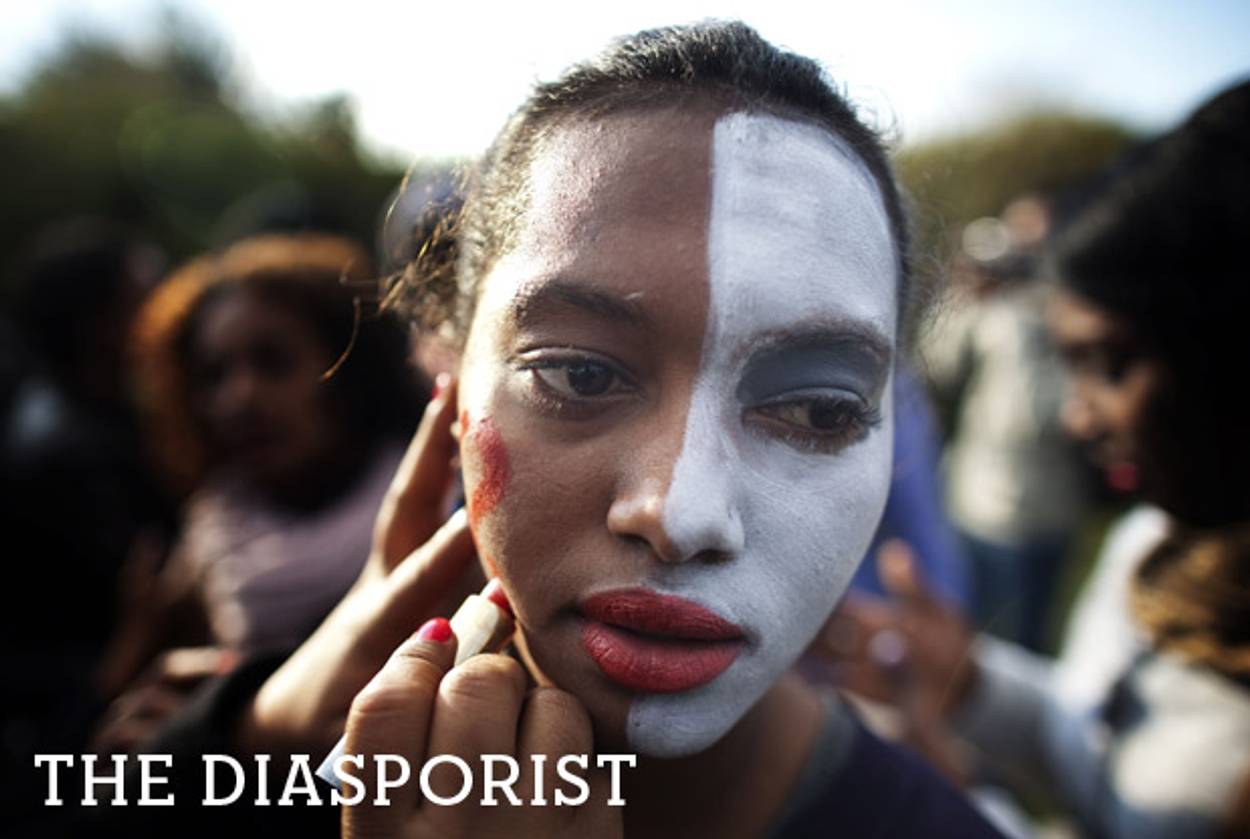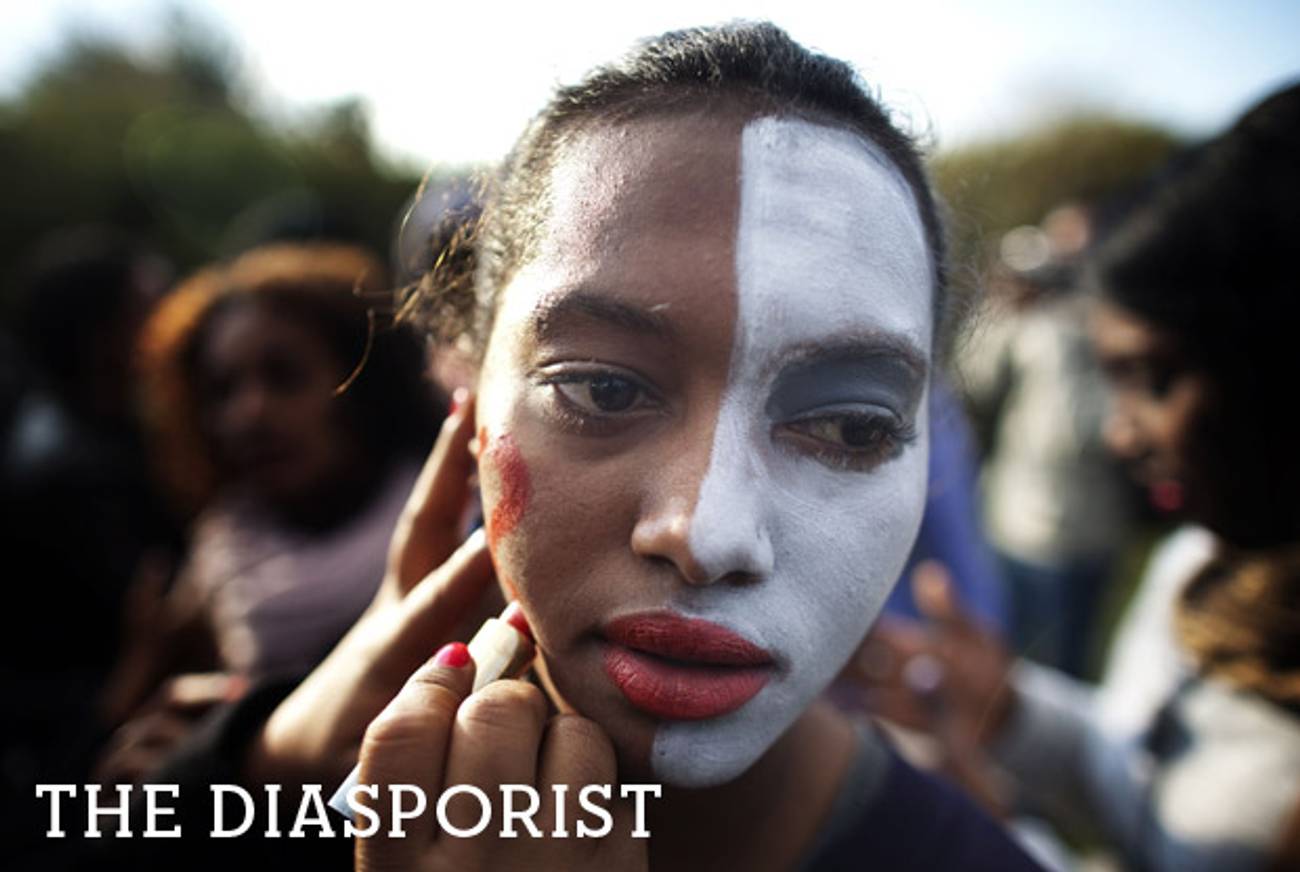Israel’s Shifting Color Lines
A new film, 400 Miles to Freedom, follows Ethiopian immigrants who long to move to the Jewish state but find unexpected barriers upon arriving there




They thought they were the only Jews left in the world, and then they made it to the promised land—and found some surprises.
“Here in the country of Israel, everyone is white?” Avishai Mekonen’s mother asked upon arriving in Israel from Ethiopia with Operation Moses, a memory she recounts in her son’s new documentary 400 Miles to Freedom. Yes, she was told. “The elders as well as the children?” Yes, she was told.
“Will we soon be white like them?” she asked.
In January, 5,000 protesters took to the Jerusalem streets to argue that a generation after Operation Moses, Israel had failed to live up to its promise to nonwhite Israelis, Ethiopians in particular. Hours after the protest, which was spurred by an allegation of widespread housing discrimination in Kiryat Malachi, Immigrant Absorption Minister Sofa Landver—a Russian immigrant—suggested activists should “say thank you for what you got.” (Other officials were more measured.)
Mekonen’s film details the Ethiopian community’s longing for the state of Israel without addressing the ongoing struggles it has faced since arrival, and it demonstrates what happens when a people long for Zion—and find mixed results when they arrive. In an interview, Mekonen was reluctant to dwell on issues like racism or discrimination. “This movie is about the people who love the land, who love their country, who love their people,” he said. “It’s about people really wanting to live the life and the dream of 2,500 years. And no matter what the racism does, that doesn’t take it away from them.”
Still, much of the film hinges on Mekonen’s frustration that the world, including many Jews, remains fairly ignorant about the existence of black Jews. He visits Israel’s chief Ashkenazic rabbi, Yonah Metzger, and relitigates an old but long-simmering dispute, asking if he needs to convert to Judaism. “You undergo a lighter conversion,” Metzger says. “You get immersed, draw a drop of blood, half an hour and you’re done.”
“What do I do with my past, 3,000 years of Judaism, what do I do with that?” Mekonen demands. Eventually, Metzger says, “I didn’t say you’re not a Jew … you just need a little push.” (That’s the subtitle, though a more literal translation would be “a little strengthening.”)
The journey itself was treacherous, and Mekonen almost didn’t make it. In what forms the true emotional core of the film, if a jagged one, he explores for the first time his kidnapping at age 9 from a refugee camp in Sudan en route to Israel. He was taken to a camp of trafficked children, he remembers, where they gave them drugs to make them forget where they came from. Mekonen says he got through thinking of the land of milk and honey as one he still hoped to reach: “I always said, I don’t belong here,” he says in the film. “I would pray and think of a place I was supposed to arrive called Jerusalem.” Eventually, he meets and thanks the man who saved him three weeks into his captivity, an Ethiopian said to be working for the Mossad.
But the film is too sprawling—or unfocused—to go much deeper into this trauma, though it clearly still haunts him, and the most affecting scenes are between Mekonen and his parents. Instead, much time is spent on the existence of black and multiracial Jews, including Ugandan Jews (one of whom says of visiting an Orthodox synagogue in Nairobi: “We felt like a green snake in the grass, we don’t know where we belong”) and a half-Korean rabbi with kimchee on the seder plate. And Rabbi Capers Funnye—Michelle Obama’s first cousin—talks of an African-American “return” to Judaism. “We do not believe we are converting to a religion that was not our religion before the middle passage in slavery,” he tells Mekonen. “What we believe is that we’re returning to the faith of our foremothers and forefathers. … My return to Judaism was a return to my Africanness, not a return to try to emulate my brothers and sisters, or Jews from any other part of the world, but returning to a sense of self-awareness.”
By the time the conversation has pivoted from a millennia-long history to a claim to Judaism as a contemporary self-awareness, uncomfortable questions start to arise: Is this about tribal DNA or voluntary self-identification, and is an instinct toward the former just a form of obsessive gatekeeping for a very small club? And if persecution gets you into it, where does that leave the Ugandan Jews (some of whom did undergo a form of conversion), who the film notes were persecuted by Idi Amin?
The film does not linger on these questions. Mekonen says part of his mission is to show Jewish diversity to a world that sees the Israeli-Palestinian conflict, which is never explicitly mentioned in the film, as a matter of racist white Jews against dark-skinned Arabs. Of course, it is simultaneously possible for that to be an incomplete narrative that erases Middle Eastern and African Jews, and for there to be largely unchecked racism within Jewish Israeli society.
In any case, Mekonen has for several years lived in a different Jewish promised land—New York City—with his American Jewish wife and co-director, Shari Rothfarb Mekonen, and their two children, a decision he quickly characterized as personal and not as a political rejection of the country. He has yet to show the film to his parents, despite the highly personal content of the film. “When I see it I don’t see myself,” he said. “I see the whole community, what they went through to be free.”
400 Miles to Freedom will be screened in Manhattan at B’nai Jeshurun on April 30 at 7 p.m., with a discussion with the directors to follow.
400 Miles to Freedom from Tablet Magazine on Vimeo.
***
Like this article? Sign up for our Daily Digest to get Tablet Magazine’s new content in your inbox each morning.
Irin Carmon is a senior correspondent at New York magazine and co-author of The Life and Times of Ruth Bader Ginsburg. Her Twitter feed is @irin.
Irin Carmon is a senior correspondent at New York magazine and co-author of The Life and Times of Ruth Bader Ginsburg. Her Twitter feed is @irin.